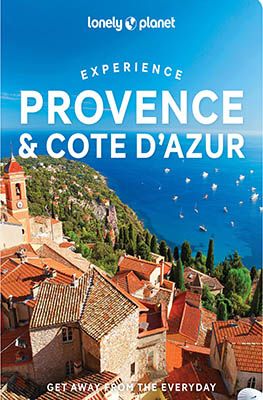Nestled in the heart of Provence lies Orange. This originally Roman city is often overlooked by tourists travelling along the Route du Soleil towards the Mediterranean. Yet Orange, despite its modest size, is a city certainly worth visiting. On our route to Toulon in June, we spent a few days in this former independent principality of our royal house. We subsequently discovered a city full of Roman history, cultural richness, and Provençal charm.
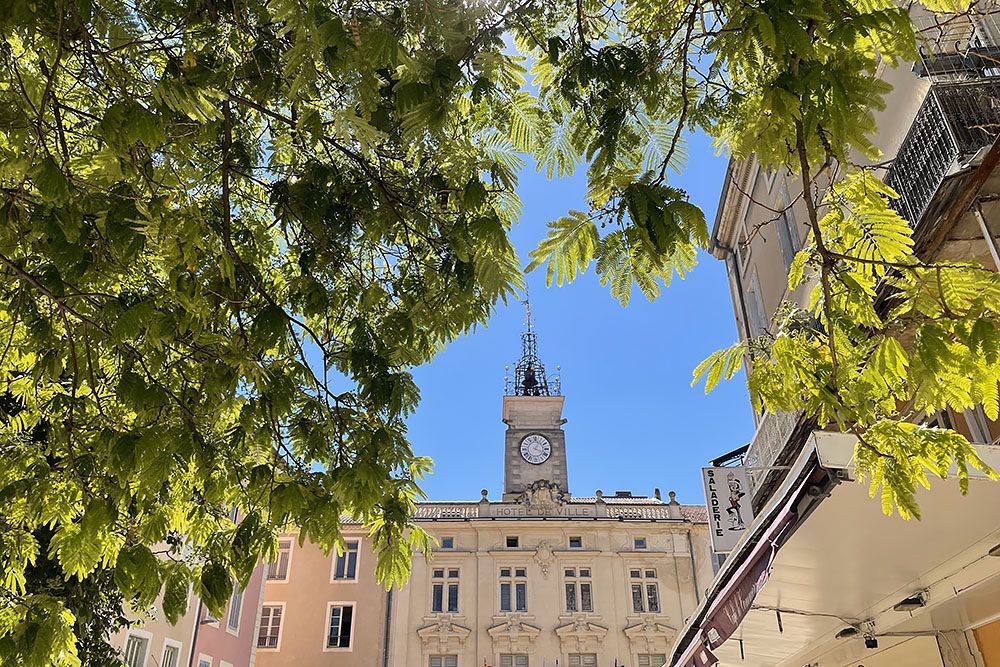
A bit of history about Orange
Orange was founded as “Arausio” in 35 BC, after which the settlement grew into an important Roman centre. The most impressive remnant from this period is the well-preserved Roman theatre. This theatre, which is on the UNESCO World Heritage list, is still in use today! After the fall of the Roman Empire, Orange came under various rules, including those of the Visigoths and the Franks.
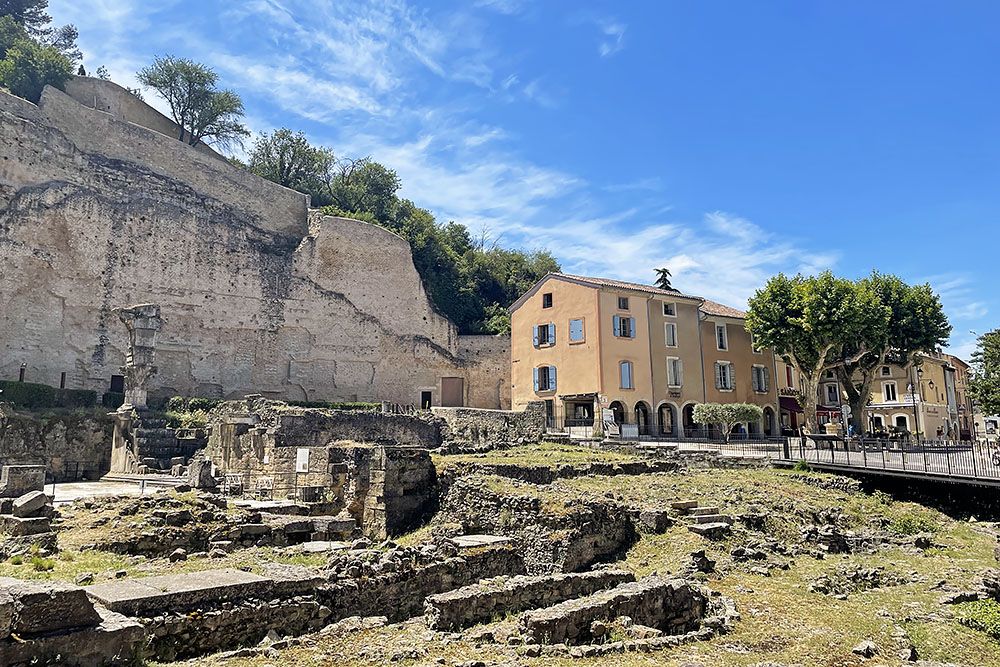
In the Middle Ages, the city became the centre of an independent principality. In the mid-16th century, this principality came into the hands of William of Nassau-Dillenburg, the founder of the Dutch royal house. He thus inherited the title ‘Prince of Orange’ and was thereafter called William of Orange.
In 1713, at the Treaty of Utrecht, the House of Orange-Nassau officially lost the principality of Orange. Nevertheless, the Dutch royal family was allowed to continue using the title ‘Prince(ss) of Orange’. For this reason, the Dutch still dress in orange for (important) international matches. Incidentally, nothing remains in the city that reminds one of the time when Orange was a principality of the Netherlands. However, there is a section in the Musée d’Art et d’Histoire dedicated to the connection between Orange and the Dutch royal house.
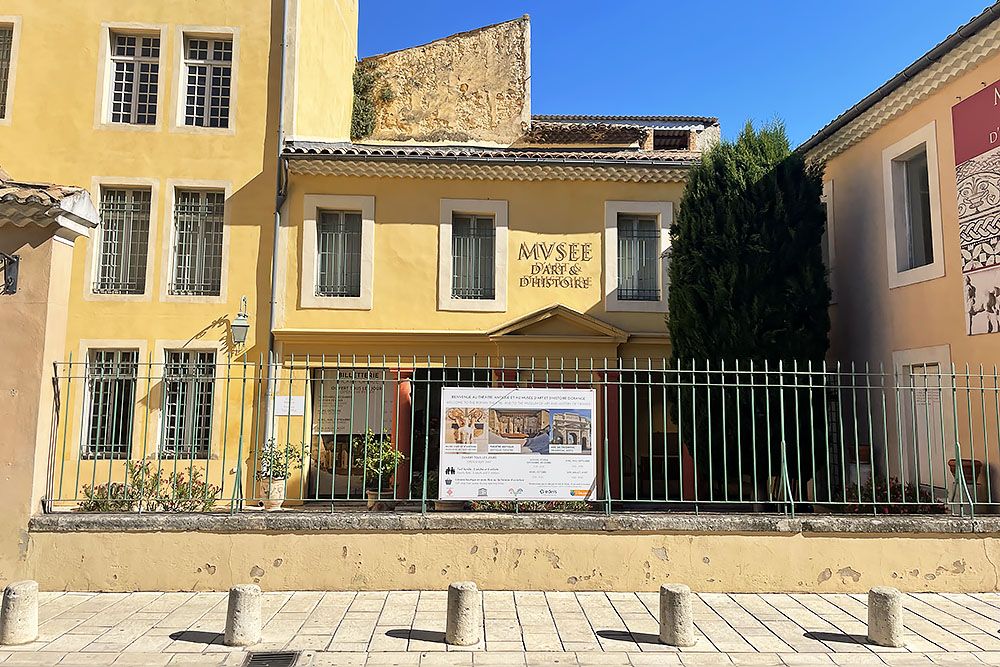
The most beautiful sights in Orange
The first thing we notice as we enter Orange is the imposing presence of the Roman theatre. This UNESCO World Heritage site is not just a ruin; it’s one of the best-preserved Roman theatres in the world. Personally, we find this the absolute highlight of Orange. And because you can easily spend hours here, we’ll go into more detail about it below.
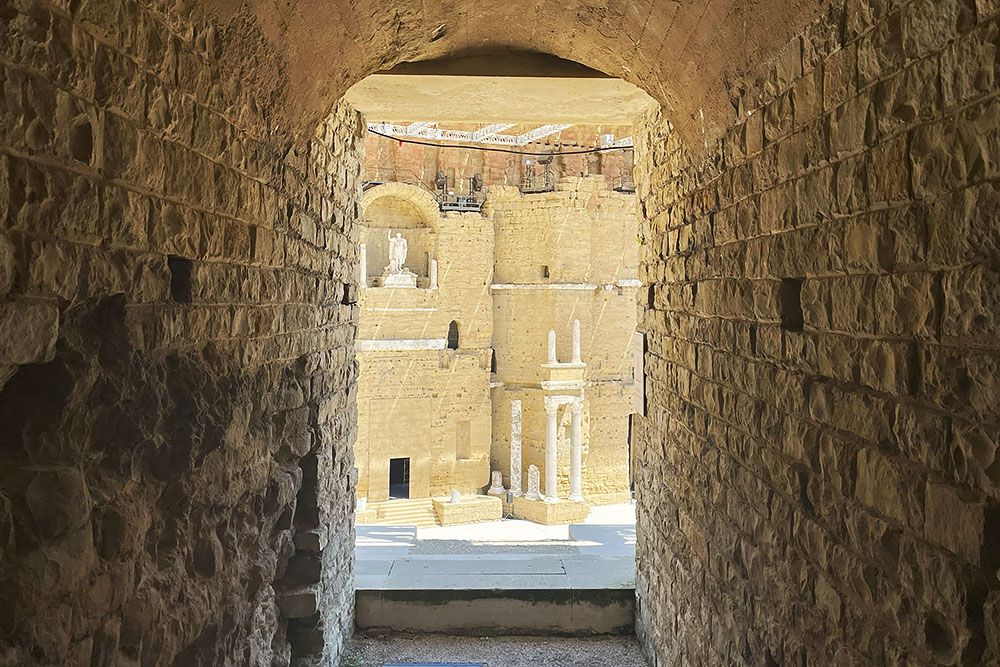
Roman theatre
The Roman theatre was built in the 1st century AD to spread culture and entertain the population. This UNESCO World Heritage site once accommodated up to 7,300 spectators. With an impressive façade 103 metres long and 37 metres high, it offers a unique glimpse into Roman architecture and entertainment.
The theatre displays all the classic elements of a Roman theatre according to Vitruvius: the cavea (semicircular seating), side entrances, and a remarkably well-preserved stage wall. Originally, this wall was decorated with columns and numerous statues in niches, of which only a few remnants can now be seen.
After centuries of neglect, the theatre underwent a large-scale restoration in the 19th century. Today, it is not only a historical monument but also a vibrant cultural centre.
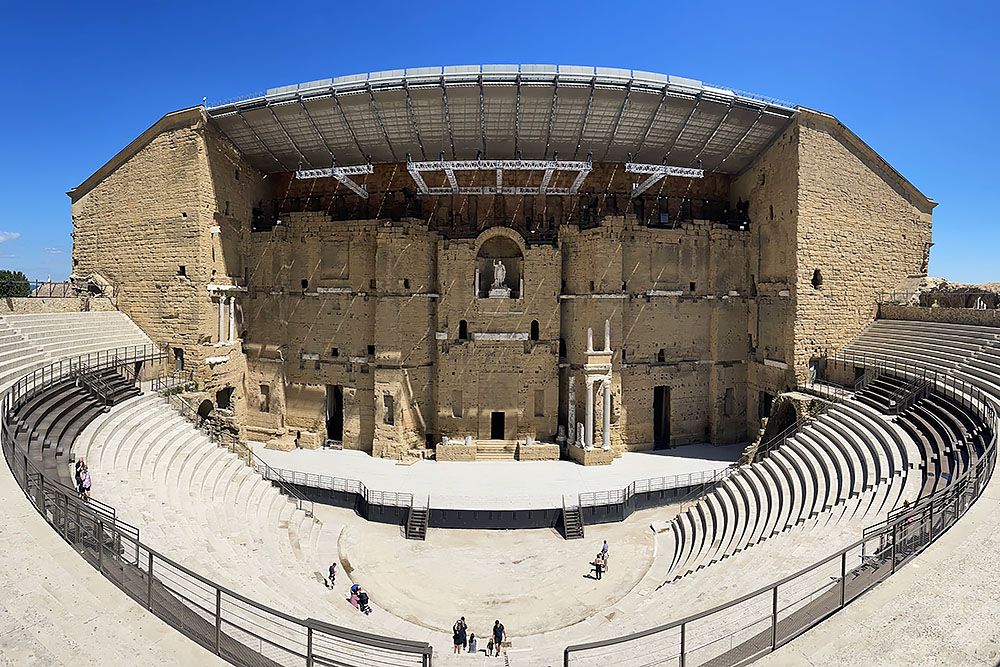
Opera and the Sound Odyssey
Every summer, the Roman theatre forms the backdrop for the famous Chorégies d’Orange, a prestigious opera festival. Additionally, for 90 evenings, the Sound Odyssey takes place, a 45-minute light and sound spectacle. The ancient stage forms the background of a fully AI-generated journey of Odysseus through a world of sounds and melodies. With headphones on, we visited an entirely new universe inspired by antiquity. We have experienced many light shows and festivals, but we found the Sound Odyssey truly extraordinary. Absolutely an activity that should not be missed on your city break to Orange!
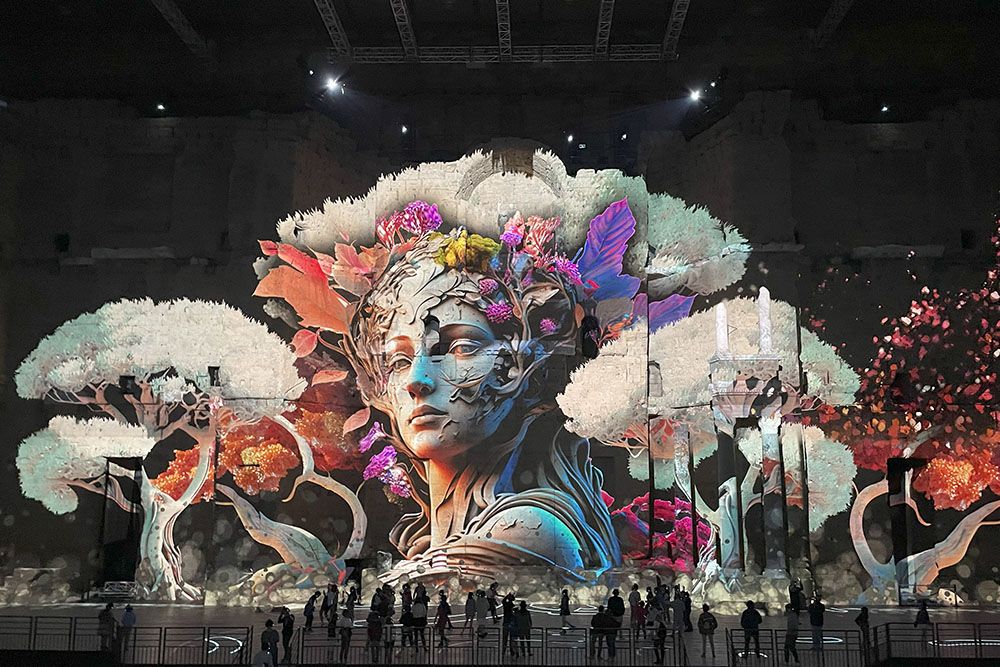
Virtual Reality experience
Recently, an innovative virtual reality experience has been added to the visitor experience. In a small room, you are handed a VR headset by a staff member. As soon as you put on the headset and the staff member starts the VR experience, you meet Jade, the protagonist. Like us, Jade visits the Roman theatre where she finds an old mask. The moment she picks it up, she is suddenly transported 2000 years back in time. Guided by the mask, Jade must bring the “spirit of the place” back to life. Only then can the theatre performance scheduled for that evening go ahead!
It’s a fun and interesting plot. What we particularly appreciate, however, is that this gives us a good idea of how the theatre must have looked back then. But also how ingenious the Romans were in building such a large theatre. We therefore find the VR experience a more than welcome, extra bookable addition. Especially if you do this prior to your tour through the theatre. When you then sit on the ancient stone steps and look out over the stage, you can easily imagine how it looked 2000 years ago. The theatre certainly came to life for us.
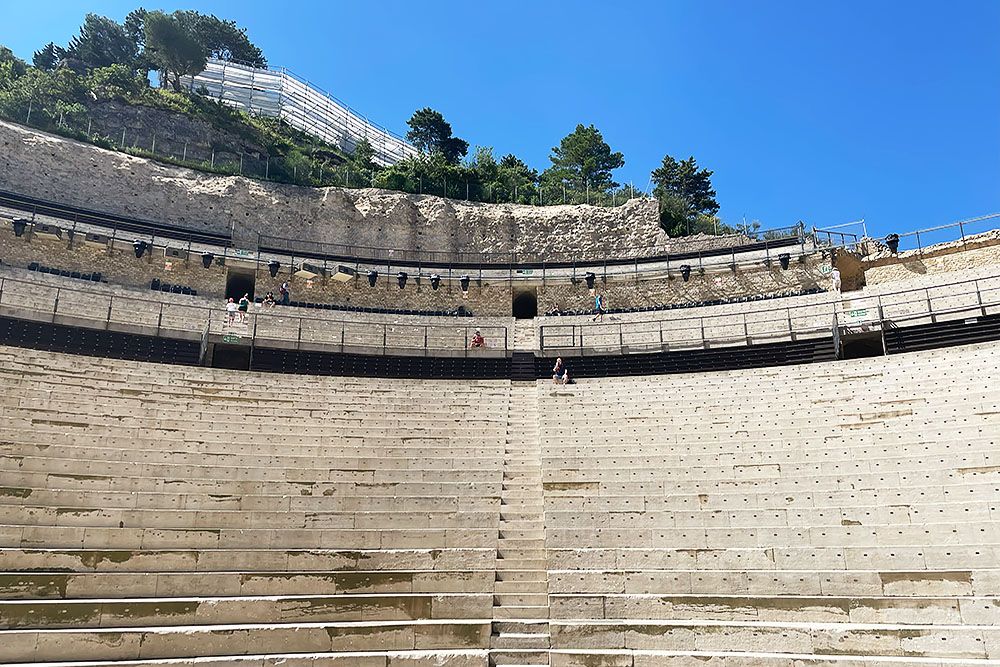
Triumphal arch
But the theatre is not the only Roman remnant in Orange. The Triumphal Arch, also a UNESCO site, stands proudly at the northern entrance of the city. The detailed reliefs on the arch tell stories of Roman victories and are a feast for the eyes of history enthusiasts.
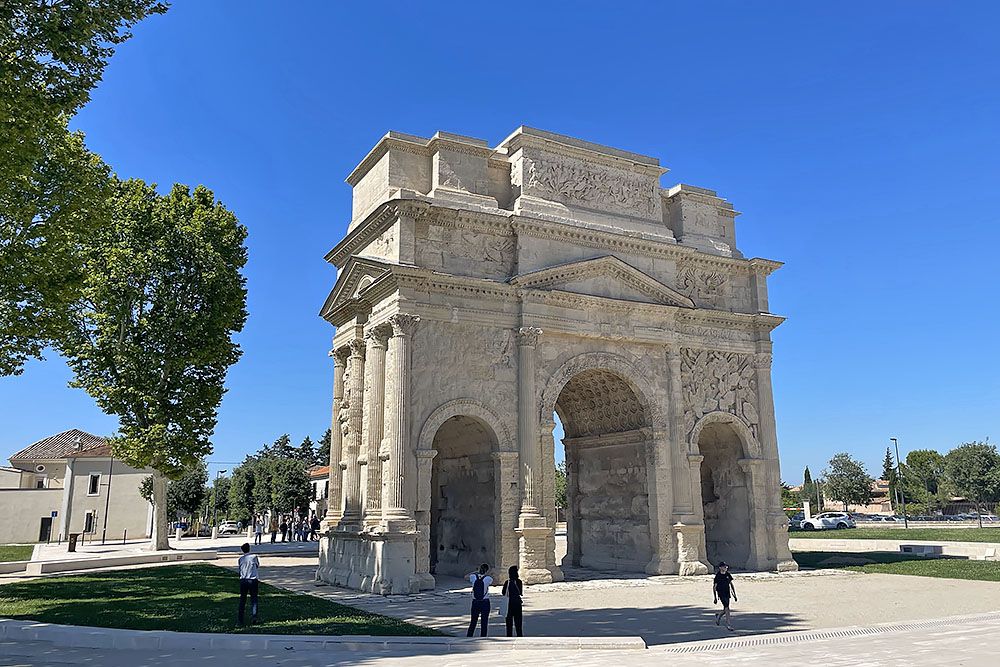
Orange Museum
The Orange Museum (Musée d’Art et d’Histoire) is housed in a 17th-century mansion opposite the Roman theatre. This museum harbours a wealth of historical artefacts. One of the most remarkable pieces is the Roman cadastre from the 1st century. It is a unique archaeological document that testifies to the organisation of the Roman province. Additionally, the museum offers a glimpse into the medieval period and the Protestant princes. There is also a collection of 19th-century art.
To be quite honest, we were back outside rather quickly. This was mainly because the accompanying captions and descriptions for the artefacts were only in French. For art and history enthusiasts who have little trouble with the French language, this museum is certainly worth a visit.
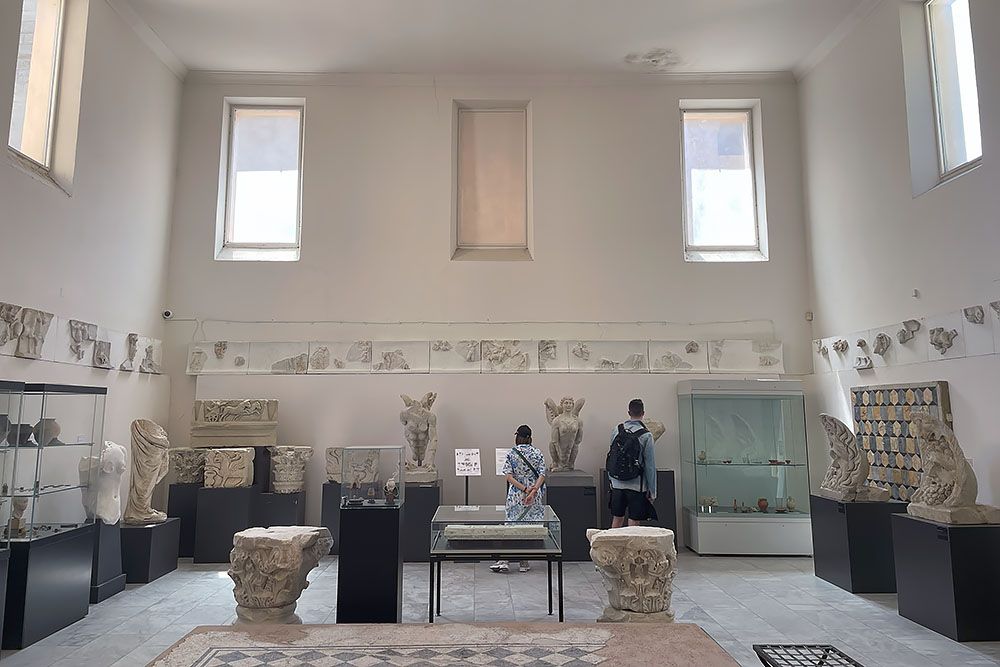
Colline Saint Eutrope
The Colline Saint Eutrope is a 97-metre-high hill with a breathtaking view. From here, you can see the historic centre of Orange, the Roman theatre, and the surrounding Rhône Valley. You can even spot Mont Ventoux and the Dentelles de Montmirail in the distance.
On the hill, there is a public park with remains from various periods of Orange’s history. One of the most striking ruins is that of the 12th-century castle, once the residence of the princes of Orange-Nassau. There is also an oak tree planted as a memento of a royal visit by Queen Juliana in 1952.
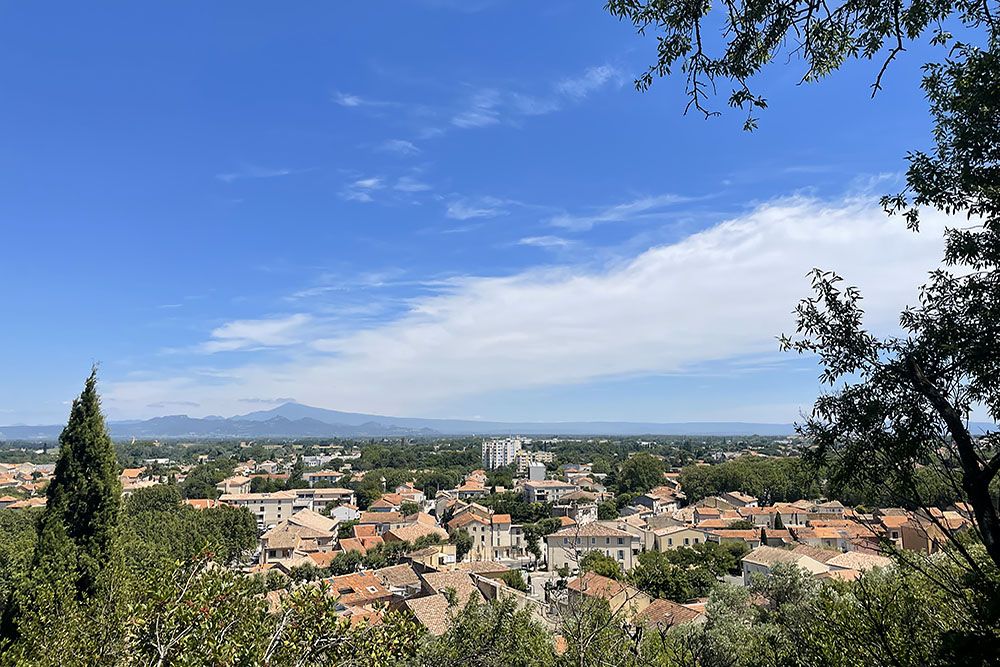
Cathedral of Notre-Dame-de-Nazareth
The Cathedral of Notre-Dame-de-Nazareth in Orange is an impressive religious edifice, originally dating from the 4th century. The cathedral was rebuilt in the 12th century in Romanesque style and consecrated in 1208 in the presence of Guillaume des Baux, the then Prince of Orange. The building has undergone many changes over the centuries, including plundering by the Huguenots in the 16th century and restorations in later periods. During the French Revolution, the cathedral even briefly served as a temple for the Goddess of Reason.
The Notre-Dame-de-Nazareth is worth visiting for its seven side chapels, dedicated to various saints, and for its mix of architectural styles, including a neoclassical portal from the 19th century. As the former seat of the Orange bishopric, the cathedral remains an important symbol of the city’s religious and cultural heritage.
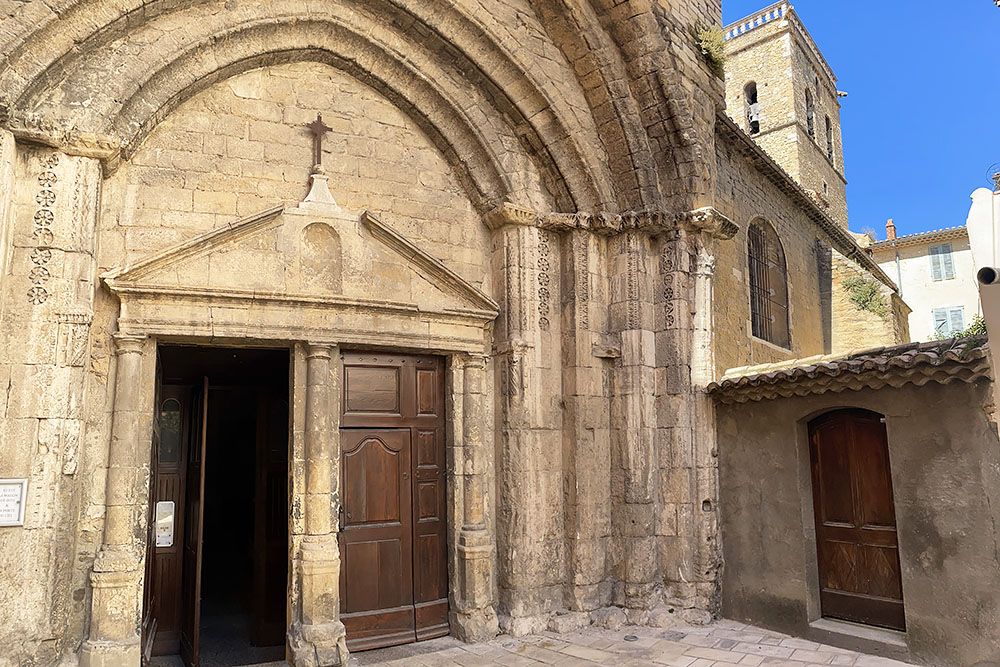
Provençal art of living
Beyond the grand monuments, Orange has the unmistakable charm of a Provençal town. We found it delightful to simply stroll through the narrow streets and enjoy an espresso on a sunny terrace, such as on the Place aux Herbes, a charming, particularly relaxed square in the heart of the old town.
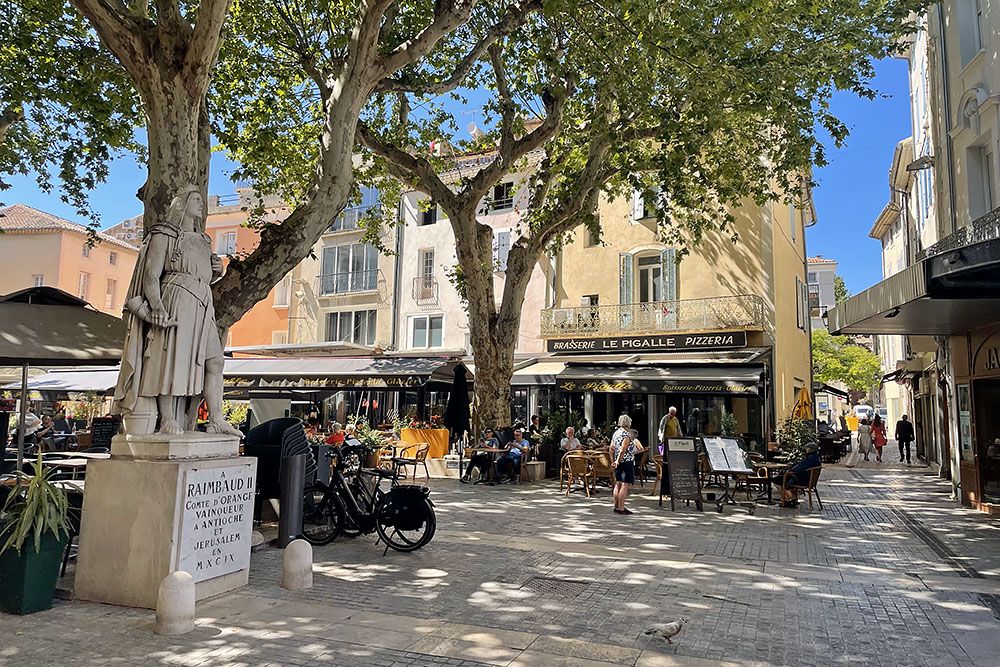
Wine and gastronomy of Orange
We believe a visit to Orange would not be complete without tasting the local wines. One way to discover the rich wine tradition of the region is via the Orange wine route. This route is part of the wine route through the famous Rhône wine region, an area that stretches from Vienne to Avignon.
The region is known for its Côtes du Rhône wines, with grape varieties such as Grenache, Syrah, and Mourvèdre for red wines, and Rolle (Vermentino) for white wines. Besides wine tastings, you can enjoy panoramic views of the vineyards along the route and participate in seasonal activities. For instance, you can experience the grape harvest in autumn, while winter is perfect for truffle hunting in nearby domains. The Orange wine route thus offers an interesting mix of wine experience, culture, and gastronomy throughout the year.
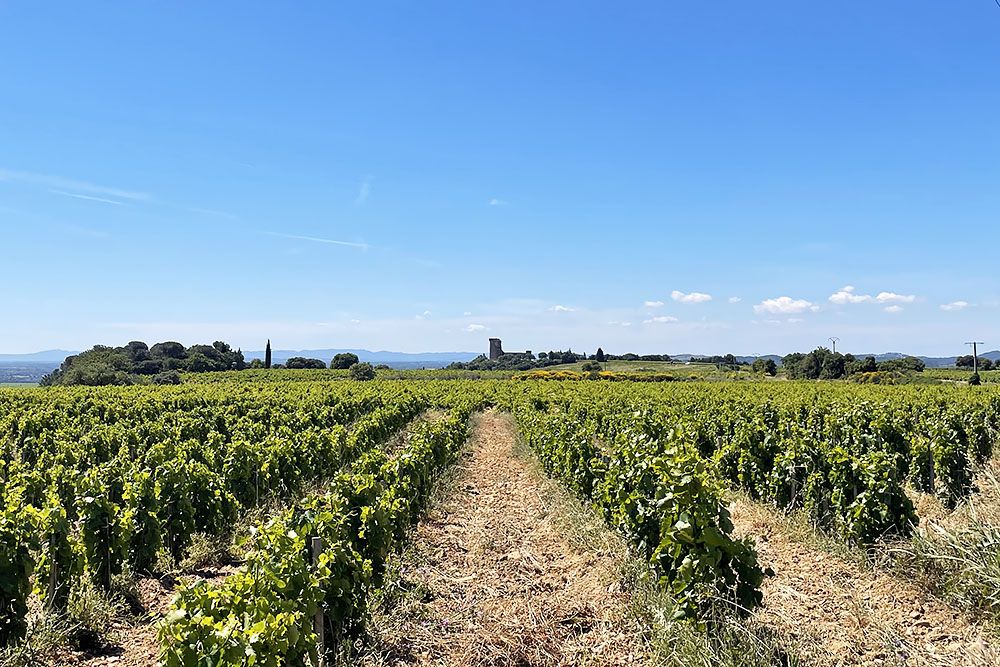
Châteauneuf-du-Pape: Crown Jewel of the Southern Rhône
In the vicinity of Orange, we find some of the most renowned wine appellations of the southern Rhône. One of these is Châteauneuf-du-Pape, which most wine enthusiasts know by name. This area lies just south of Orange. It is known for its powerful red wines.
The historic wine region, whose name means “the new castle of the pope”, owes its origin to the 14th-century popes of Avignon. Curious about why these popes had their summer residence here, we decide to take a bicycle trip to Châteauneuf-du-Pape. After all, it’s nearby and the landscape is only gently undulating.
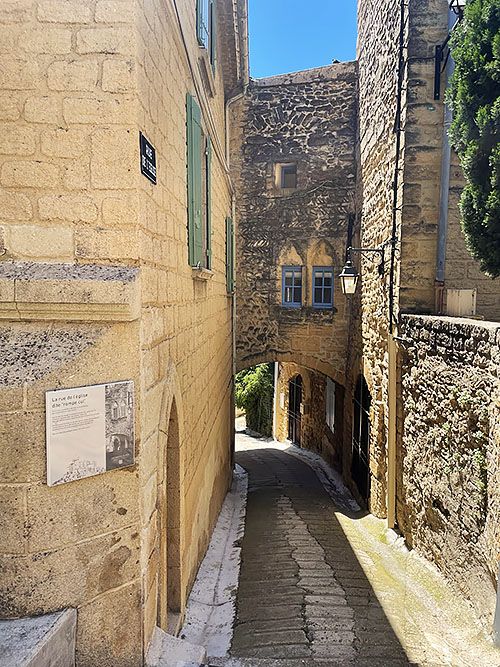
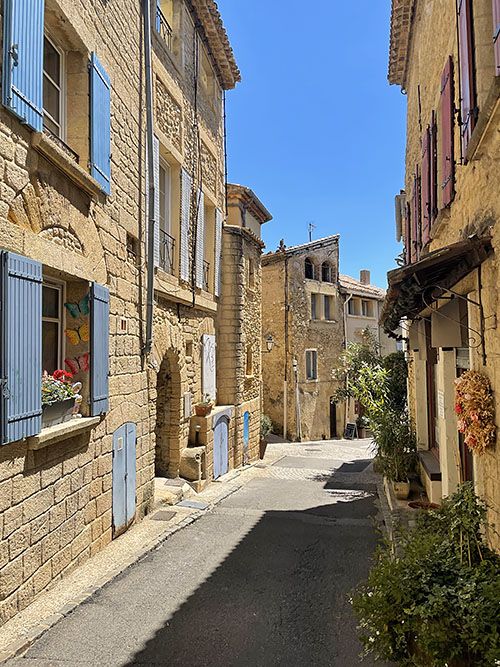
The wines of Châteauneuf-du-Pape
Before we mount our steel steeds, we read up a bit. We want to know why the wines from this region are so special. One of the reasons, we read, is the unique ‘terroir‘ of the vineyards near Châteauneuf-du-Pape. The soil is covered with large, round pebbles, known as ‘galets roulés’. These stones absorb the sun’s heat and release it back to the vines at night. This ensures optimal ripening of the grapes.
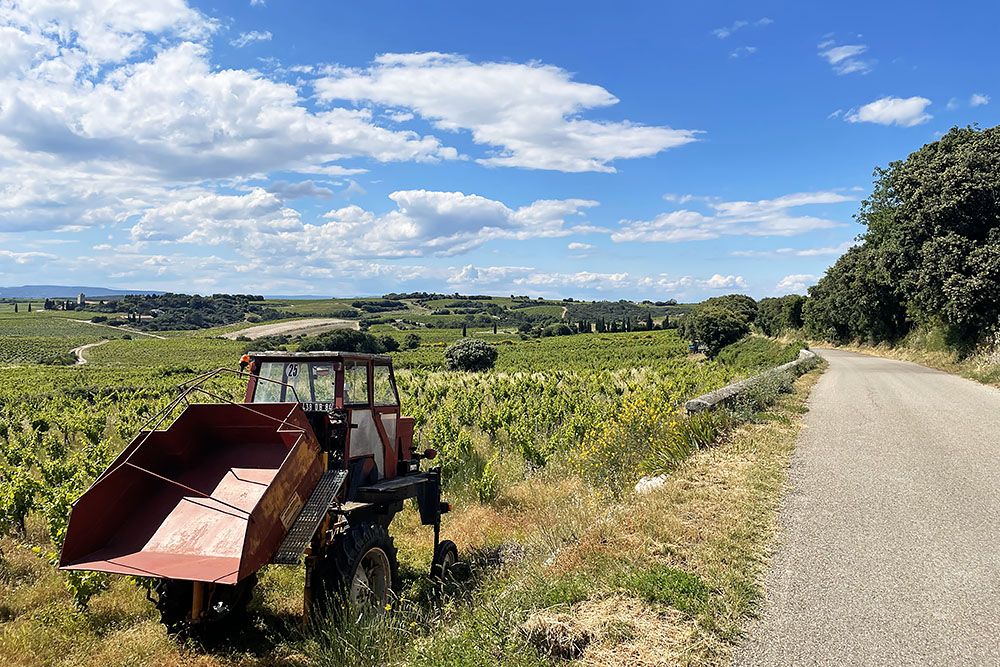
The appellation allows for up to 13 different grape varieties to be used, of which Grenache, Syrah, and Mourvèdre are the most important for the red wines. White Châteauneuf-du-Pape, although rarer, is made from varieties including Roussanne, Grenache Blanc, and Clairette.
The red wines of Châteauneuf-du-Pape are known for their power, complexity, and richness. They often have aromas of ripe red fruit, spices, and a hint of leather or earth. The white wines are full-bodied and aromatic, with notes of white flowers and stone fruit.
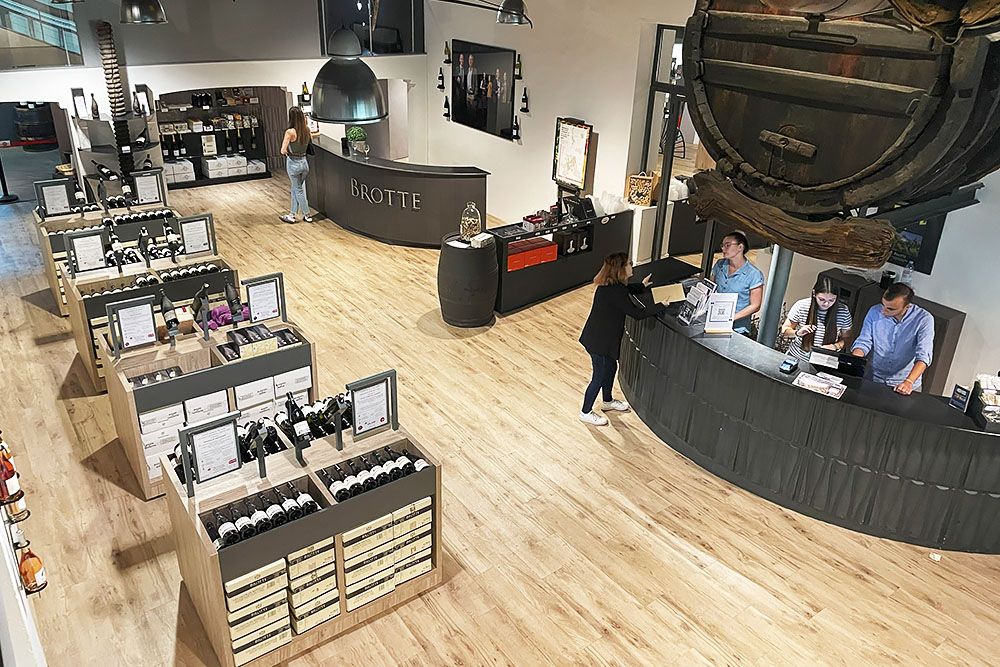
The picturesque village of Châteauneuf-du-Pape
After a beautiful bike ride with the impressive Mont Ventoux always in the background, we arrive in the charming Châteauneuf-du-Pape. The village, built against and on a hill, exudes history and wine tradition. The terraces are already quite filled with lovers of the grape juice. For us, it’s still too early to start on the wine, so we park our bikes and set out on foot.
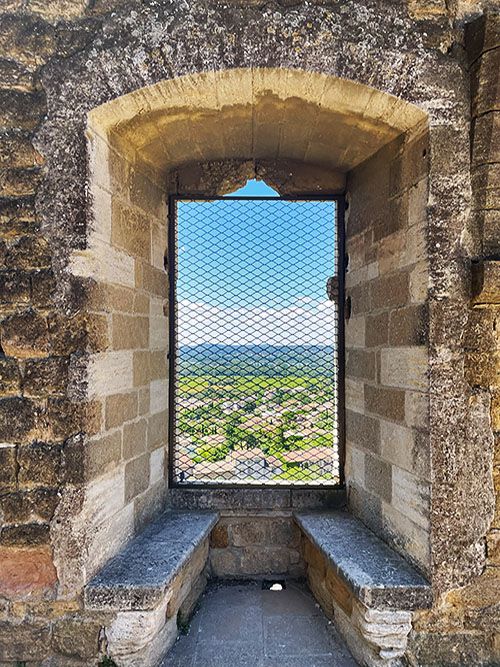
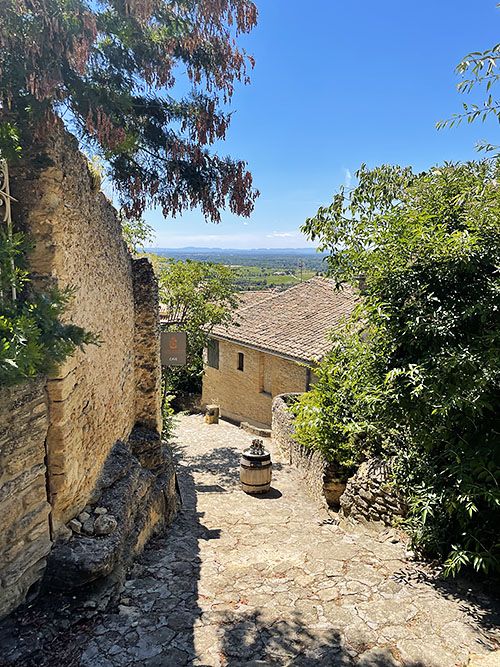
Using a walking map we get from the local tourist office, we first head to the hilltop. Here are the ruins of the 14th-century papal castle. Little remains of the castle, except for a large stone wall. But thanks to the picturesque view over the vast vineyards, our wine excursion is already a success. Via narrow, winding streets, we later walk past old stone houses, charming wine shops, and cosy restaurants back down. We end up at the village square, Place de la Fontaine, which forms the beating heart of the small community. On a sunny day like today, it’s mainly tourists we encounter here, with a surprisingly large number from the United States, from what we can hear.
Before lunch, we visit the Musée du Vin Brotte. With the free audio tour, we follow “in the footsteps of the winemaker”. Because there is so much to read and listen to, we wander around the interesting museum for almost an hour. We learn quite a lot about wine production and the unique characteristics of the Rhône appellations. And afterwards, it’s naturally time for a tasting. Although the weather is lovely outside, this museum is not to be missed if you go to Châteauneuf-du-Pape. That much is clear to us now!
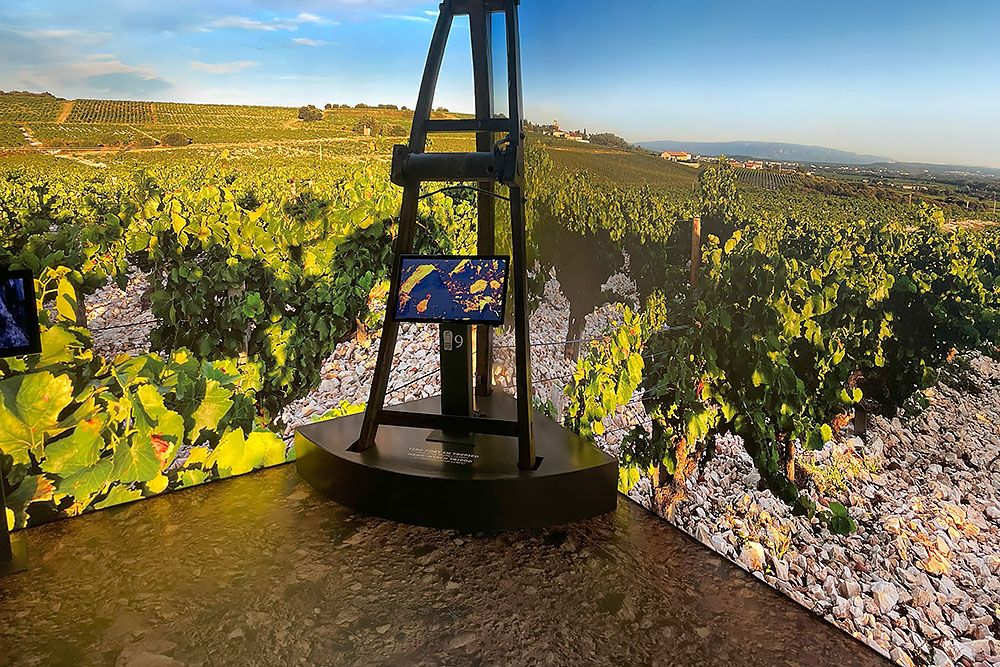
FAQs about visiting Orange
Orange is situated in southeastern France, in the Vaucluse department of the Provence-Alpes-Côte d'Azur region. The city is approximately 21 km north of Avignon and about 230 km south of Lyon.
The car is the most practical mode of transport, especially if you plan to travel further. Train travel is also possible and quite comfortable. The fastest connection is by TGV directly from Paris to Orange. Travelling by plane means flying to Marseille. From there, you can rent a car or take the train.
The city of Orange was founded by the Romans in 35 BC under the name "Arausio". This name was derived from Arausio, the Celtic water god. It was common for Romans to name settlements after local deities. Over the centuries, the name "Arausio" gradually evolved to "Aurenjo" in Provençal, and finally to "Orange" in French. Despite what is often thought, the city's name has nothing to do with the fruit. The orange was introduced to Europe much later.
In the Middle Ages, people began to associate the name with the fruit, leading to the use of an orange in the city's coat of arms. When the area became a principality and eventually came into the hands of the Dutch royal house, this family took on the title "of Orange". In modern French, the name is pronounced as "Oranje", not as the French word for the colour or fruit.
Orange is a historic city in Provence, known for its Roman heritage. The main attractions include:
- Roman Theatre: UNESCO World Heritage site, well-preserved, hosts summer events.
- Triumphal Arch: UNESCO site with detailed reliefs.
- Orange Museum: Historical museum in a 17th-century mansion.
- Colline Saint Eutrope: Hill with panoramic views and historical ruins.
- Cathedral of Notre-Dame-de-Nazareth: Medieval cathedral with rich history.
Orange combines historical monuments with the typical Provençal atmosphere, visible in the narrow streets and cosy squares such as Place aux Herbes. Furthermore, the city also offers modern experiences such as a VR tour in the theatre and the 'Sound Odyssey' performance.
Generally, late spring (May-June) or early autumn (September-October) is ideal due to the pleasant weather. There are also significantly fewer tourists in the city then. If you're interested in cultural events such as the opera festival, then summer is the best choice. But in that case, be prepared for higher prices and larger crowds.
Orange offers a variety of accommodations for different preferences and budgets. Here are some of the best options:
- Justin de Provence: a bed and breakfast in a traditional Provençal house. The splendid and particularly tastefully decorated country house is located 2 kilometres from the centre. It has an outdoor pool and a heated indoor pool, a hammam, a hot tub and a sun terrace. We stayed here for two nights and were particularly impressed by the hospitality of the hosts. The delicious breakfast was also prepared with great care.
- Le Clos d'Orange. This hotel is often mentioned as one of the best in Orange. It is especially appreciated by families and couples for its beautiful spacious rooms and cosy garden.
- Grand Hotel d'Orange, BW Signature Collection. Located in the historic centre, this hotel offers a wellness centre, seasonal outdoor pool and a restaurant.
- Logis Hôtel Le Glacier. This hotel is praised for its unique French character, cosiness and excellent location.
- Hôtel L'Herbier d'Orange. We stayed 1 night in this excellent, small hotel without frills. We found the location ideal: a stone's throw from the cosy Place aux Herbes.

Orange offers a variety of excellent restaurants. One of these is Au petit patio where we ourselves dined particularly tastefully. Excellent cuisine and good wines. Very pleasant ambiance in the cosy courtyard. Other good restaurants in Orange.
Châteauneuf-du-Pape, known for its prestigious wines, also offers some excellent restaurants where you can enjoy refined dishes. Here are three top restaurants in the village:
- Restaurant La Mère Germaine. Historic restaurant with a rich culinary tradition. It specialises in classic Provençal dishes and has a beautiful terrace overlooking the vineyards.
- Restaurant Château des Fines Roches. This restaurant is located in a fairy-tale castle amidst the vineyards. It offers a refined gastronomic experience and an extensive wine list with local Châteauneuf-du-Pape wines.
- Restaurant Le Verger des Papes. Housed in a medieval castle with panoramic views. It focuses on seasonal, local ingredients.
We visited Orange and Chateauneuf-du-Pape at the invitation of Atout France, Théâtre Antique d’Orange and Orange’s tourism office.The content of the blog was independently and objectively compiled based on our own impressions.

